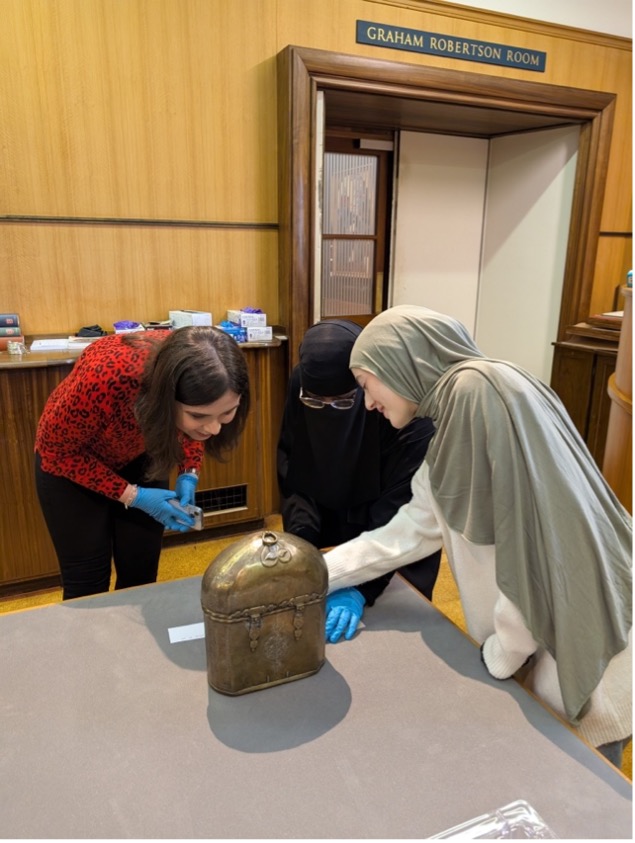On 27 February 2025, the Cambridge team (Mary and Matteo) took part in a handling session organised in the Graham Robertson Room at the Fitzwilliam Museum, alongside 16 BA students enrolled on the ‘Diversifying the Italian Renaissance’ Special Subject Option at the University. The session was led by Prof. Vicky Avery, Keeper of European Sculpture & Decorative Arts at the Museum, who guided the students through the complexities of handling and caring for fragile objects from the past.
From bronze mortars and ewers to maiolica bowls, plates, and albarelli (pharmacy jars), as well as bronze statuettes and enamelled copper plates, we discussed how these items challenged received understandings of ‘Italian Renaissance’ culture. As we turned, lifted, and inspected these objects, we focused on how their technical composition, material histories, and varied provenances help us to reconsider the Renaissance as a fluid and interconnected phenomenon rather than a monolithic, nation-bound one. Just a few examples: Cornish tin and copper from southern Germany formed the alloys used to cast bronze statuettes representing exotic animals, like ostriches, or popular northern European subjects, such as Giambologna’s Bagpiper. Cloistered nuns in northern Italy experimented with maiolica, attempting to replicate the patterns and colours of Iznik pottery. Spanish lusterware from Manises and gilt-brass dishes decorated with elaborate arabesques prompted questions about the permanence of Islamic visual traditions in the Italian Peninsula, from the fifteenth to the seventeenth century, and beyond.
As we engaged with each work, critical questions about museum display and interpretation were also raised. How can we effectively communicate the richness and diversity of the Italian Renaissance within static display cabinets? How do we convey the immediacy and everyday importance of objects that were once handled, used, and cherished in domestic, religious, and commercial spaces?
This session provided a key opportunity to share ideas with the students and to engage directly with some of the fascinating objects in the collection of the Fitzwilliam collection – the protagonists of our planned interpretation project of the Museum’s Renaissance galleries.



